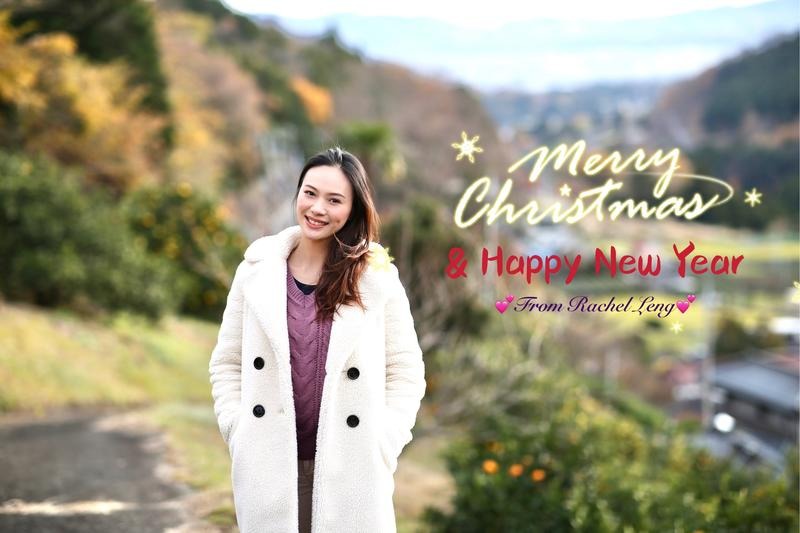Happy New Year!
皆様、明けましておめでとうございます。
How did you spend your new year’s holidays?
I mostly stayed in Tokyo, so this post will share some tips and recommendations of what to do if you find yourself in the city over the new year’s holiday period!
お正月をどのように過ごしましたか?
昨年は大変お世話になりありがとうございました。
本年もどうぞよろしくお願いします。
皆様のご健康をお祈り申し上げます。

Make sure to visit a Shinto Shrine!
New Year’s is widely regarded as Japan’s most important holiday. During this time, there are a wide range of Japanese customs and activities to welcome the new year. Hatsumōde (初詣hatsumōde), the first Shinto shrine visit of the Japanese New Year, is one of these customs. Sometimes, people may visit a Buddhist temple instead, but traditionally, it is the first visit and prayer at a Shinto shrine. There are many shrines and temples around Japan, and almost all of them get crowded in the first few days of the year.
As a foreigner, the fact that the Japanese alternate between Shinto and Buddhist ceremonies can be confusing.
Did you know that Japanese weddings are often held at a Shinto Shrine, whereas funerals are held at Buddhist temples?
(Click here to read more about attending a “Japanese Wedding” in my previous post!)


From midnight, a ritual called joya no kane is performed where a large bell is rung 108 times to cleanse us of the 108 earthly desires that cause human suffering. The joya no kane reoresents a purification of the human mind and soul for for the year ahead.

During the first Shinto shrine visit, wishes for the new year are made, and new omamori (お守り、protective charms or amulets) are bought. Often, the old ones from the year before are returned to the shrine so they can be burned (and be renewed). There are many different types of omamori for visitors to choose from – each protecting against something unique! For example, there are multiple amulets for purposes such as “safe transportation,” “safe childbirth,” “good health” and for “passing exams.” For success with work, I purchased a charm for “勝運” (shou-un; for “winning”). Many charms also have pretty embroidered patterns and cute accessories such as bells. One such omamori I bought was to provide good relationships called “縁結び” (en musubi; to “tie fate together”).

今年は初めて初詣に行った神社でお守りを買いました。人がすごく多くて驚きました!お守りは交通安全、合格祈願、安産、縁結びなど、たくさん種類があるので、買う時に迷いました。私は仕事のために「勝運」というお守りと、柄が可愛いので「縁結び」も買いました。お守りはどれもとても可愛くて、これらは日本の逸品だと思いますね。私にとって興味深いのは、初詣はお寺ではなく、ほとんどの人が神社へ行くことです。日本人は、結婚式は「神社」、お葬式は「寺」で行うのが、外国人の私にしては、なぜなのかはっきり解りません。(^o^)

Enjoy a quiet, peaceful Tokyo City
I really enjoy Tokyo during the End of Year and New Year’s period. During this time, the city gets rather empty and very quiet, as most people take the opportunity to visit home or travel elsewhere. Whereas some people may find it boring that there are not too many major countdown events and many shops and restaurants are closed in Tokyo, I actually appreciate the peacefulness. To me, it is a good time to wind down and relax at home, refreshing oneself for the new year ahead.
私は、静かなお正月を過ごしました。お正月の東京が好きです。その理由は、年末年始の期間に東京の街は比較的に人が少なく空っぽになって平穏な雰囲気になると思います。多くの外国人は、東京は大きいカウントダウンイベントを行っていないこと、そして多くの店やレストランが閉まっていることをつまらなくに感じるかもしれません。でも、私にとって、それは家でくつろいでリラックスするのに良い時期です。新しい年のために自分自身をリフレッシュすることができます。

Make a day trip to a ski resort!
I also made plans to visit Gala Yuzawa and ski in Japan for the first time! I am very new to skiing, so was quite nervous at first, but it was great to experience so much soft powder snow! I had a lot of fun.
Gala Yuzawa ski resort is super convenient and easy to get to from Tokyo. If you purchase the JR Tokyo Wide Pass available to foreigners at a price of 10,000 yen for 3 days of unlimited travel within the Tokyo area, it is very reasonable to access the Gala Yuzawa resort directly via the shinkansen bullet trains! You also get a number of discounts, including for ski rentals and the onsen facilities at Gala Yuzawa resort. Highly recommend it for an easy one-day or multiple day trips!
また、私は日帰りでガーラ湯沢を訪れ、初めて日本でスキーをすることができました!私はスキーに慣れていないので、最初はとても緊張しましたが、柔らかい雪を経験するのは素晴らしかったです!今の時期は雪がサラサラのパウダースノウで滑り易かったです。楽しかった~
スキー用具とマスクをすべて身に着けていて、私を見分けることはほとんど不可能ですね。 笑)
Final Thoughts: Japanese New Years Food
If you do find yourself in Tokyo over the new year’s holiday, be sure to get involved in the local customs and activities to welcome the new year and take the chance to appreciate the city during one of its quieter seasons! If you happen to get bored of the city with all the shops and restaurants being closed, most ski resorts (and onsen resorts) nearby such as at Gala Yuzawa will certainly be operating and make a fun day trip~
Some other traditional Japanese new years customs include eating Toshikoshi Soba on New Years Eve, and Osechi Ryōri on New Years Day.
Toshikoshi Soba
年越しそば
“Toshikoshi Soba” (年越しそば)is a unique Japanese tradition where the buckwheat noodles are slurped on New Year’s Eve. It is said that this tradition dates back to the Kamakura period over 800 years ago, when a Buddhist temple gave out soba to the poor on New Year’s. Nowadays, the Japanese believe that eating soba on New Years Eve will bring good fortune with a long and healthy life. The act of eating soba and biting into the noodles also symbolizes “breaking off the old year”! (Be careful though, as it is also belived that eating soba exactly at midnight or when New Year’s bells are ringing is bad luck as you are unable to break away from the previous year properly!)

TIP: Try soba from different regions!

初めて白河そばを食べました!美味しかったですよ~。
Not all soba is created equally!! There are many different ways to make and eat Japanese soba depending on the region it originates from,
In the above photo, I am trying some Shirakawa Soba for the first time!
Shirakawa in Fukushima Prefecture is one of the four most famous soba places in Japan (alongside Shinshu, Izumo, and Morioka).
It is said that the feudal lord Sadanobu Matsudaira encouraged locals to cultivate buckwheat that could withstand the region’s cold weather.
As a result, handmade fresh Shirakawa Soba is firmer to the bite than other sobas. It also features a unique eating method where portions of soba are split into layers of round boxes, and you pair each bite with assorted condiments such as salmon roe, tempura, pickles, or grated radish.
Perfect for “breaking off the old year” and ushering in the new with good fortune and a flavorful range of pleasant surprises!
歴史は古く、藩主・松平定信が冷害に強いそばの栽培を奨励したことが起源と言われています。打ち方、つなぎ、つゆに独自の技と伝統をいかして守り続けられているらしいです。
小さめの皿に小分けにされたもりそばをイクラやなめこ、山菜などの具材で少しずつ味わうことができるのが楽しかったです!
Osechi Ryōri
御節料理
“Osechi Ryōri” (御節料理 or お節料理) was originally a way for housewives (and their families) to survive the first few days of the New Year, when stores throughout Japan were closed. The foods that are used for osechi can be prepared in advance and sit out in a cool area (often outdoors) for a few days without spoiling. Often, everything is placed in compartmentalized lacquer boxes to be stacked in layers. Osechi is not something you will find on a restaurant menu in Japan, but many stores and restaurants allow people to order them in preparation for the holidays.
Many food items found in osechi represent prosperity, good fortune and health. As with most things in Japan, presentation is very important, and the foods are almost always efficiently arranged with elegance and color. Some foods typically found include shrimp (representing long life) and fish such as sea bream (for auspicious fortune).

Personally, I have not yet tried osechi before, and did not have the chance to experience this custom this year. Hopefully next year!!










